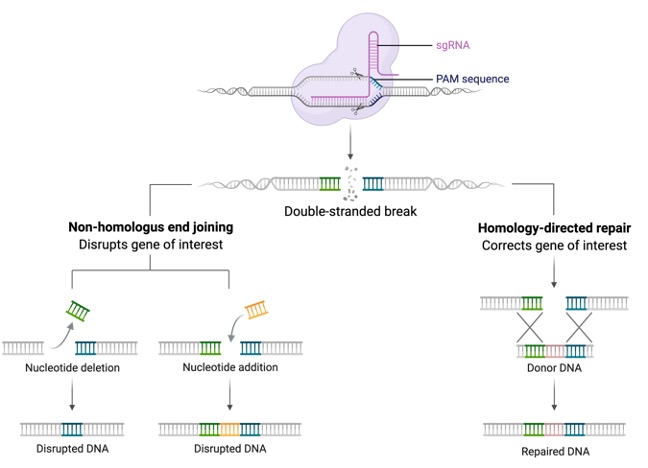Table of Contents
CRISPR-Cas9 Definition
The discovery of CRISPR as a gene-editing tool made a revolutionary change in science. The discovery was announced in 2015 as Science’s 2015 Breakthrough of the year. Other gene-editing tools such as TALENs (transcription activator-like effector nucleases) and ZENs (zinc finger nucleases) were replaced by this technology.
CRISPR is easy to use technology that does not need a conventional protein for each targeted DNA sequence. Instead, gRNA is used in CRISPR that makes it an easier and less time-consuming process as compare to other gene-editing tools.
The Rise of CRISPR-Cas9
The word CRISPR stands for clustered regularly interspaced short palindromic repeats. The discovery of CRISPR made various significant benefits in the field of biology and medical sciences. It was first discovered to protect bacteria from re-invading bacteriophages, which is related to adaptive immunity in humans. It was defined as a family of viral DNA snippets.

It acts as a natural gene-editing system in bacteria that include two key components: gRNA and Cas9. The gRNA helps in find and binding with specific DNA targets whereas Cas9 or CRISPR-associated enzymes follow the gRNA and make a cut in the specific site of target DNA that results in disabling the target.
This technique is used by scientists to cut the specific DNA targets and replace them with desired DNA. Physiological anomalies caused by gene mutations or defective genes can be corrected by using CRISPR.
CRISPR-Cas9: a Versatile Gene-editing Tool
Various medical techniques using CRISPR to cure several gene-related diseases in humans. It has been noted that CRISPR can slow down the progress of cancers by switching off a gene in the immune cell. These altered genes can be used further to fight cancer. The clinical trial study to use CRISPR technology is approved by US FDA in 2016.
This technology will be used to cure cancer patients. Besides medicine, technology has also been used in the field of agriculture and animal husbandry. The genes of crops can be improved by using this technology and also can be used to make disease-resistant crops.
CRISPR Causing Gene Damage?
The ethical concerns with CRISPR are one of the issues against this technology. This concern was also raised against some other gene-editing technologies. The notion of bias and “playing God” are the major concerns related to these gene-editing technologies. Now the question that what defines a gene to be constructed as either “good” or “bad”?
Another issue which is also marked as “breaking news” about the CRISPR technology has been raised recently. Nature published a study that reveals the possible pathogenic consequences of CRISPR. Some on-target mutagenesis in the form of large deletions and complex genomic rearrangements at target sites were identified by researchers.
The mitotically active cells of mice and humans were used as target cells. Previously, researchers from Columbia University have also reported about the safety of CRISPR technology in 2017. The study revealed that the technology can cause hundreds of mutations in the target cell. However, they failed to replicate their results therefore the claim was retracted.
CRISPR is a very feasible, easy-to-use, and far-reaching gene-editing tool. The issues will affect the fast-paced utilization of this technology in different fields but it is also crucial to explore its benefits and the dangers. We must bring out the risks of this technology in the open especially ones that are as important as mutation and gene damage.







